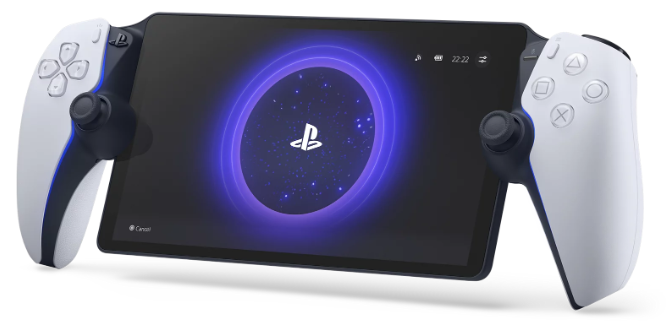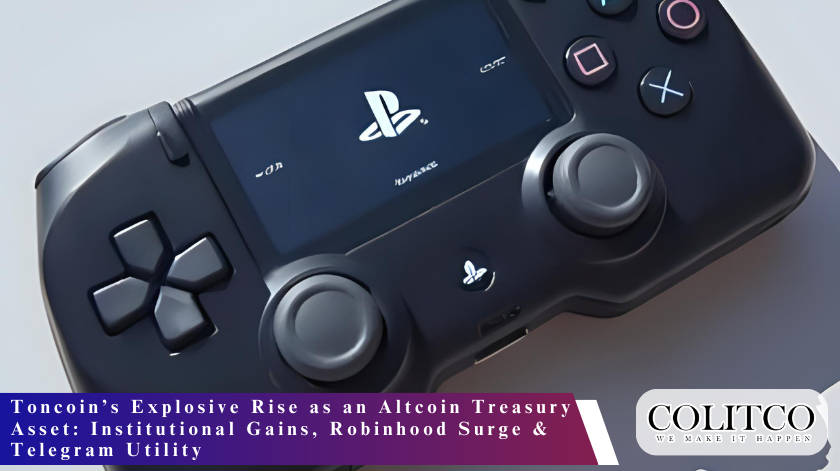The gaming world is buzzing with fresh reports suggesting Sony is developing a PS6 handheld that borrows heavily from Nintendo’s playbook. According to recent leaks from industry insider Moore’s Law Is Dead, Sony’s next-generation portable gaming device will feature Nintendo Switch-style docking functionality, allowing seamless transitions between handheld and TV gaming.
This development marks a significant shift in Sony’s handheld strategy after years of absence from the portable gaming market. The last dedicated Sony handheld, the PlayStation Vita, was discontinued in 2019 following lukewarm sales figures. Now, with the handheld gaming market experiencing unprecedented growth, Sony appears ready to re-enter the fray with a device that could challenge both Nintendo and PC gaming handhelds.
The PS6 Handheld Leak: What We Know
According to Moore’s Law Is Dead, a YouTube channel with a track record of accurate PlayStation hardware leaks, Sony is developing a PlayStation 6 handheld codenamed “Canis” that will launch alongside the main PS6 console. The leaked specifications paint a picture of a powerful portable device designed to compete directly with the upcoming Nintendo Switch 2.
Technical Specifications of Sony’s PS6 Handheld Revealed
The rumoured PS6 handheld specifications include:
- Processor: AMD APU with four Zen 6c cores plus two dedicated system cores
- Graphics: 16 x RDNA 5 compute units
- Clock Speeds: 1.2 GHz in handheld mode, 1.65 GHz when docked
- Display: Touchscreen with potential OLED technology
- Storage: M.2 slot and MicroSD expansion
- Audio: Dual microphones with haptic feedback support
- Connectivity: Full backwards compatibility with PS4 and PS5 games
The leaked specifications suggest ray tracing performance comparable to the PS5 Pro in some games, though titles may require patches to achieve base PS5-level performance in handheld mode.
Nintendo Switch-Style Docking System
The standout feature of Sony’s rumoured handheld is its Nintendo Switch-style docking functionality. When docked, the system would run at approximately 1.65 GHz compared to 1.2 GHz in handheld mode, delivering enhanced performance and potentially double the ray tracing capabilities of the current PlayStation 5.
This docking system represents a fundamental departure from Sony’s previous handheld approach. Unlike the PlayStation Portal, which relies entirely on streaming, this device would run games natively while offering the flexibility of both portable and console gaming experiences.
Sony’s Handheld Gaming History: Learning from Past Mistakes
To understand the significance of this PS6 handheld development, we must examine Sony’s previous attempts at portable gaming. The company’s track record reveals both impressive achievements and costly missteps.
PlayStation Portable Success
The original PlayStation Portable (PSP), launched in 2004, sold approximately 80 million units globally, making it the only handheld gaming platform to significantly compete with Nintendo for market share. The PSP’s success stemmed from its powerful hardware, multimedia capabilities, and strong third-party developer support.
PlayStation Portal™ Remote Player for PS5® console
PlayStation Vita’s Commercial Failure
The PSP’s successor, the PlayStation Vita, tells a different story. Despite superior hardware and innovative features, the Vita sold only around 16 million units before being discontinued in 2019. Multiple factors contributed to its failure:
- High Cost and Proprietary Memory: Expensive proprietary memory cards and the device’s premium pricing alienated potential customers.
- Limited Third-Party Support: The loss of key franchises like Monster Hunter to Nintendo’s 3DS severely impacted the Vita’s appeal, particularly in Western markets.
- Poor Marketing Strategy: Sony struggled to clearly define the Vita’s target audience, often positioning it inaccurately as a portable PlayStation 2.
- Mobile Gaming Competition: The rise of smartphone gaming during the Vita’s launch period created additional challenges for dedicated handheld consoles.
The Modern Handheld Gaming Renaissance
Sony’s rumoured return to handheld gaming coincides with an unprecedented boom in portable gaming devices. The demand for dedicated handheld gaming consoles has fostered innovation and competition, creating a fertile environment for this multi-billion-dollar sector.
Market Leaders and Competition
Nintendo Switch Dominance: The Nintendo Switch has sold over 140 million units since 2017, proving the viability of hybrid gaming. Nintendo’s first-party exclusives like Mario, Zelda, and Pokémon continue to drive sales, making the Switch ecosystem unique and irreplaceable.
PC Gaming Handhelds: Devices like the Steam Deck OLED and ASUS ROG Ally X have demonstrated that PC gaming can translate effectively to handheld form factors, offering access to vast game libraries.
Streaming Solutions: Sony’s own PlayStation Portal has found its niche as a streaming-focused device for PS5 owners, though it lacks the native gaming capabilities of traditional handhelds.
Market Demand and Trends
Recent surveys show that Steam Deck and Nintendo Switch dominate among gamers who use handhelds, indicating strong demand for both PC and console-style portable gaming. This data suggests room for Sony to carve out its own segment with native PlayStation gaming on the go.
Strategic Implications of Sony’s Handheld Return
The PS6 handheld represents more than just another gaming device; it signals Sony’s recognition of shifting market dynamics and consumer preferences.
Ecosystem Integration
Unlike previous Sony handhelds that required separate game libraries, the PS6 handheld would theoretically run the same titles as the main PS6 console. This approach mirrors Nintendo’s successful Switch strategy and eliminates the costly need for dedicated portable game development.
Competitive Positioning
The PS6 handheld would target a higher-performance niche than the Nintendo Switch 2, potentially offering better graphics and processing power for AAA gaming experiences. However, this approach comes with inherent challenges around battery life, cost, and market positioning.
Market Timing Considerations
With a rumoured release window of late 2027, Sony would enter a mature handheld market dominated by established players. The timing suggests Sony is betting on continued growth in portable gaming and believes it can differentiate through superior hardware and PlayStation ecosystem integration.
Technical Challenges and Opportunities
Developing a successful PS6 handheld presents numerous technical hurdles that Sony must navigate carefully.
Performance vs. Battery Life Balance
Modern handheld gaming devices face constant trade-offs between processing power and battery longevity. Previous Sony handhelds suffered from relatively short battery life compared to Nintendo alternatives, a criticism the company must address.
Thermal Management
High-performance processors generate significant heat, particularly challenging in compact handheld form factors. The rumoured docking system could help with thermal management while providing enhanced performance when connected to external power.
Game Compatibility and Optimisation
PS4 and PS5 games would require patches to run optimally on the handheld, indicating potential compatibility challenges that could affect user experience.
Market Analysis and Competitive Landscape
The handheld gaming market in 2025 presents both opportunities and challenges for Sony’s potential entry.
Pricing Strategy Implications
Speculation places the PS6 handheld price between $399-$500, positioning it as a premium alternative to mid-range handheld options. This pricing must balance hardware capabilities with mass market appeal.
Nintendo Switch 2 Competition
The Nintendo Switch 2, launched in 2025, has already established strong market momentum. With 4K capabilities when docked and an established game library, the Switch 2 presents formidable competition for any new handheld entrant.
PC Gaming Handheld Alternatives
Devices like the Steam Deck OLED and ASUS ROG Ally X offer PC gaming libraries and Windows compatibility, creating additional competitive pressure.
Developer and Industry Perspectives
The success of any handheld gaming platform depends heavily on developer support and industry adoption.
Third-Party Developer Considerations
Sony’s previous handheld struggles partly stemmed from limited third-party support. The loss of major franchises like Monster Hunter to competing platforms significantly impacted the Vita’s appeal. Sony would need to secure strong developer commitments to avoid repeating this mistake.
First-Party Game Strategy
Sony’s success with PlayStation exclusives like The Last of Us, God of War, and Spider-Man could translate well to handheld gaming, provided the hardware can deliver satisfying portable versions of these experiences.
Consumer Expectations and Market Reception
Early reactions to PS6 handheld rumours reveal mixed consumer sentiment, reflecting the complexity of the modern handheld gaming market.
PlayStation Fan Response
PlayStation enthusiasts have expressed excitement about the prospect of native portable gaming, particularly the ability to play PS5 titles on the go without streaming limitations.
Skepticism About Market Viability
Some industry observers question Sony’s ability to compete effectively against Nintendo’s established handheld dominance, citing previous failures and market dynamics.
Release Timeline and Market Readiness
Moore’s Law Is Dead speculates that the PS6 handheld could launch in late 2027 alongside the main PS6 console, giving Sony time to refine the technology and build developer support.
Development Timeline Considerations
The extended development timeline suggests Sony is taking a measured approach, learning from previous handheld missteps while ensuring the device meets modern performance expectations.
Market Preparation Strategy
A 2027 launch would allow Sony to observe Nintendo Switch 2 performance and PC handheld evolution, potentially informing final hardware and software decisions.
Industry Impact and Future Implications
Sony’s potential return to handheld gaming could significantly reshape the portable gaming landscape.
Platform Wars Revival
A successful PS6 handheld could reignite competition in the handheld space, potentially driving innovation across all platforms and benefiting consumers through improved hardware and software offerings.
Ecosystem Integration Trends
The success of Nintendo’s hybrid approach and Sony’s rumoured docking functionality may establish ecosystem integration as the standard for future handheld devices.
Conclusion: A Calculated Gamble in Portable Gaming
Sony’s rumoured PS6 handheld represents a calculated re-entry into the portable gaming market, armed with lessons learned from previous failures and inspired by Nintendo’s hybrid success story. The device’s Nintendo Switch-style docking functionality and native game compatibility address key weaknesses that plagued earlier Sony handhelds.
However, success is far from guaranteed. The handheld gaming market in 2025 is more competitive than ever, with established players like Nintendo and emerging PC gaming handhelds creating significant barriers to entry. Sony’s challenge lies not just in creating compelling hardware, but in building a sustainable ecosystem that attracts developers and consumers alike.
The next two years will be crucial as Sony finalises its handheld strategy and prepares for what could be its most important portable gaming launch since the original PSP. Whether this rumoured device becomes reality, and whether it succeeds, will largely depend on Sony’s ability to learn from past mistakes while capitalising on current market opportunities.
For now, PlayStation fans can only wait and speculate about Sony’s next move in the increasingly exciting world of handheld gaming. One thing is certain: if these rumours prove accurate, 2027 could mark the beginning of a new chapter in portable gaming history.
FAQs About the PS6 Handheld
- When will the PS6 handheld be released?
Current rumours suggest a late 2027 release alongside the main PS6 console.
- Will it play PS5 games?
Leaked specifications indicate backwards compatibility with PS4 and PS5 titles, though games may require patches for optimal handheld performance.
- How much will the PS6 handheld cost?
Industry speculation places the price between $399-$500, though Sony hasn’t confirmed these figures.
- Can it dock like a Nintendo Switch?
Yes, rumours suggest Nintendo Switch-style docking with enhanced performance when connected to a TV.
- Will it compete with Steam Deck?
The PS6 handheld would target similar demographics but focus on PlayStation ecosystem games rather than PC titles.
- Is this confirmed by Sony?
No, all information comes from industry leaks and rumours. Sony hasn’t officially announced a PS6 handheld.












